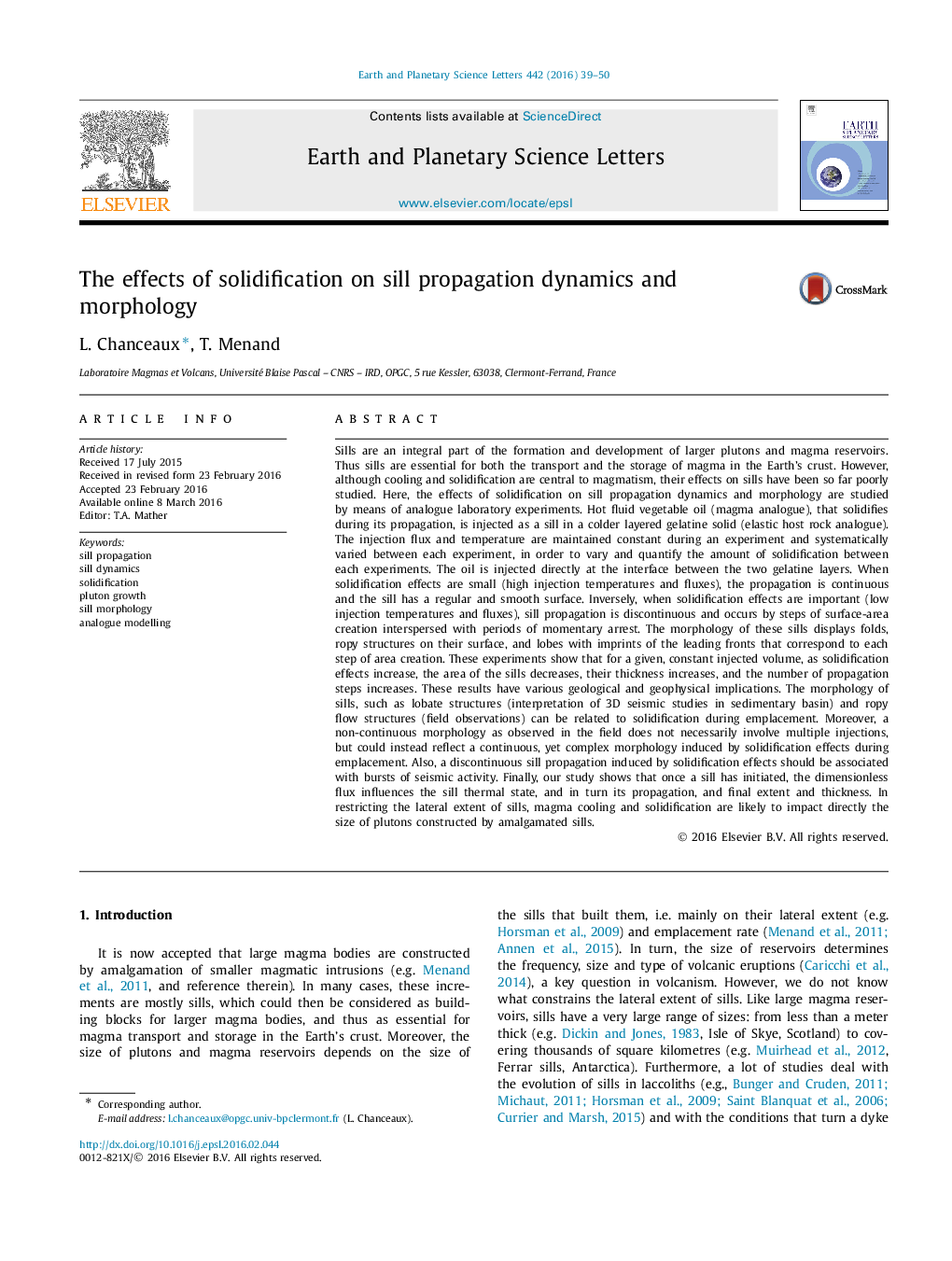| کد مقاله | کد نشریه | سال انتشار | مقاله انگلیسی | نسخه تمام متن |
|---|---|---|---|---|
| 6427543 | 1634714 | 2016 | 12 صفحه PDF | دانلود رایگان |
- Solidification effects on sill propagation are quantified with analogue modelling.
- Low magma flux and temperature enhance solidification effects.
- High solidification induces discontinuous dynamics and complex morphology of sills.
- Discontinuous propagation is likely associated with bursts of seismic activity.
- Solidification controls the size of incrementally assembled plutons and reservoirs.
Sills are an integral part of the formation and development of larger plutons and magma reservoirs. Thus sills are essential for both the transport and the storage of magma in the Earth's crust. However, although cooling and solidification are central to magmatism, their effects on sills have been so far poorly studied. Here, the effects of solidification on sill propagation dynamics and morphology are studied by means of analogue laboratory experiments. Hot fluid vegetable oil (magma analogue), that solidifies during its propagation, is injected as a sill in a colder layered gelatine solid (elastic host rock analogue). The injection flux and temperature are maintained constant during an experiment and systematically varied between each experiment, in order to vary and quantify the amount of solidification between each experiments. The oil is injected directly at the interface between the two gelatine layers. When solidification effects are small (high injection temperatures and fluxes), the propagation is continuous and the sill has a regular and smooth surface. Inversely, when solidification effects are important (low injection temperatures and fluxes), sill propagation is discontinuous and occurs by steps of surface-area creation interspersed with periods of momentary arrest. The morphology of these sills displays folds, ropy structures on their surface, and lobes with imprints of the leading fronts that correspond to each step of area creation. These experiments show that for a given, constant injected volume, as solidification effects increase, the area of the sills decreases, their thickness increases, and the number of propagation steps increases. These results have various geological and geophysical implications. The morphology of sills, such as lobate structures (interpretation of 3D seismic studies in sedimentary basin) and ropy flow structures (field observations) can be related to solidification during emplacement. Moreover, a non-continuous morphology as observed in the field does not necessarily involve multiple injections, but could instead reflect a continuous, yet complex morphology induced by solidification effects during emplacement. Also, a discontinuous sill propagation induced by solidification effects should be associated with bursts of seismic activity. Finally, our study shows that once a sill has initiated, the dimensionless flux influences the sill thermal state, and in turn its propagation, and final extent and thickness. In restricting the lateral extent of sills, magma cooling and solidification are likely to impact directly the size of plutons constructed by amalgamated sills.
Journal: Earth and Planetary Science Letters - Volume 442, 15 May 2016, Pages 39-50
